A robot will be developed that uses machine learning to accurately identify the growth of lettuce and harvest at appropriate times

With the development of robot and machine learning technology, in recent years there has been a movement
A field-tested robotic harvesting system for iceberg lettuce-Birrell--Journal of Field Robotics-Wiley Online Library
https://onlinelibrary.wiley.com/doi/full/10.1002/rob.21888
Robot uses machine learning to harvest lettuce | University of Cambridge
https://www.cam.ac.uk/research/news/robot-uses-machine-learning-to-harvest-lettuce
The mechanization of agricultural work has progressed for several decades, and while large machines have been introduced in the agricultural work of crops such as potatoes and wheat, there are many crops for which the automation of the work has not been advanced. “Iceberg Lettuce,” which is the most commonly grown type of lettuce in the UK, is also one of the crops for which automation of farming operations has not progressed. Iceberg lettuce is easily damaged if handled wildly and grows flat against the ground, making it difficult to harvest using a robot.
So Iida et al. 'S research team developed a machine learning robot called Vegebot that harvests iceberg lettuce. Research team Simon Birell said, “All fields and all lettuce are different” “If we can use a robot to harvest iceberg lettuce, we can apply the robot to other crops as well. I say. ' Also, Julia Tsai, who developed computer vision components for the Vegebot project, commented that 'at present the harvest of lettuce is done by hand and the damage to the body is very significant.'
Vegebot recognizes lettuce from images taken by a camera attached to the body, and determines whether lettuce is suitable for harvesting. Then it cuts from the root without damaging the lettuce body and seems to be able to harvest it ready to be shipped to the supermarket anytime.
You can see what kind of robot Vegebot is actually by looking at the following movie.
Robot uses machine learning to harvest lettuce-YouTube
Harvesting lettuce spread all over the field ground is ...
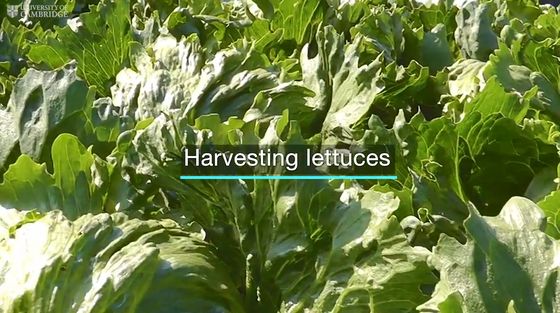
Though it is simple, the burden on the body is a big task.
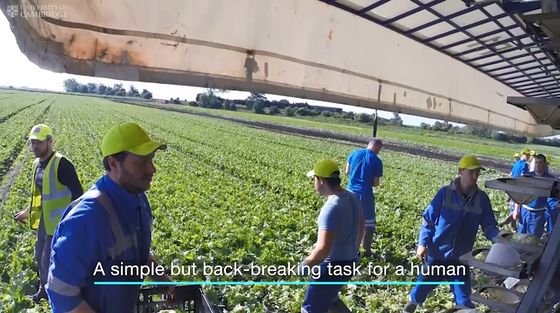
You have to bow at the time of harvest.
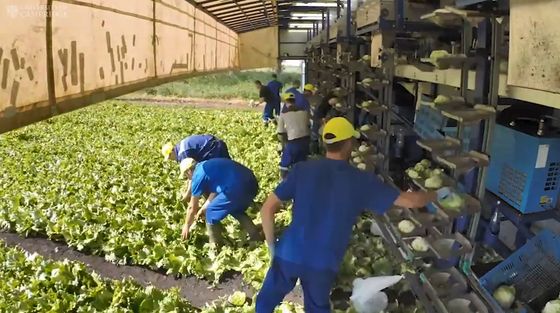
On the other hand, lettuce is fragile and difficult to automate using robots, but research teams use machine learning to develop robots that harvest such lettuce.
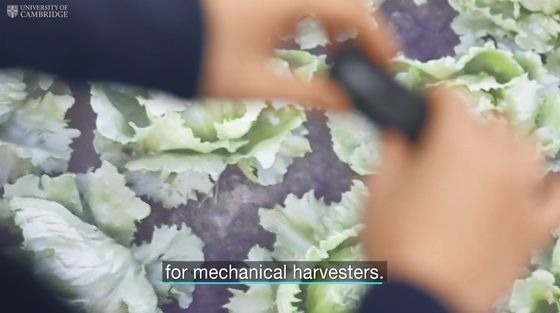
At the development of Vegebot, first I was trained in the laboratory to 'identify iceberg lettuce from the image and determine if it is suitable for harvest'. Then, we cooperated with local agriculture unions and did test in actual field.

The Vegebot, developed by the research team, first recognizes the lettuce in the field of view and identifies whether the lettuce is suitable for harvesting.
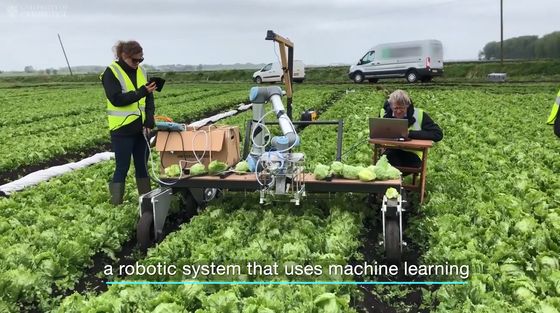
Then bring the robot arm close to the lettuce ...
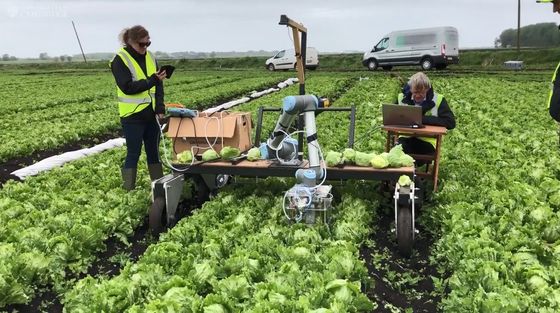
Harvest so as not to damage the body. 'From lettuce identification to harvest is a process that takes only a few seconds for humans, but this is a very difficult challenge for robots,' said Josie Hughes, co-author of the study.
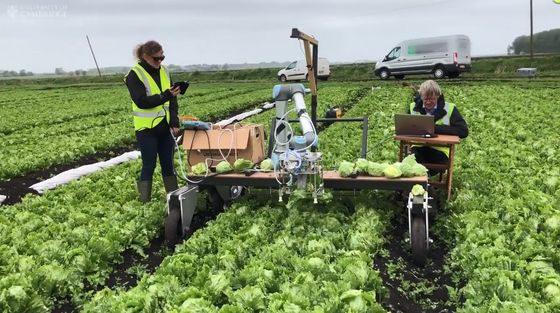
Two cameras are attached to the Vegebot near the robot arm so that lettuce can be cut smoothly. In addition, the research team adjusted the pressure of the robot arm so as not to damage the lettuce, and it is also possible to adjust the pressure of the grip and apply it to other crops. 'We wanted to develop Vegebot's approach as not necessarily unique to Iceberg lettuce, but to be able to apply it to other above-ground crops,' said Iida.
Although the harvest speed of Vegebot is not equal to human at the time of writing, robot-based harvesting may eliminate labor shortages in agriculture in the future. Also, in the normal harvesting process, people only go around harvesting fields once, and it is often the case that immature crops are left unharvested at that single harvest time. However, it is possible to use the robot to reciprocate the same field many times, and it is possible to harvest immature crops the day after the next day.
'We also collect a lot of data on the lettuce we are harvesting, which can also help improve efficiency, such as which fields are most efficient in growing lettuce,' 'Vegebot's We need to bring harvest speeds closer to humans and reach competitive levels, but I think robots have great potential, 'said Hughes.

Related Posts:







